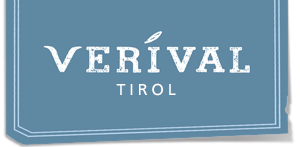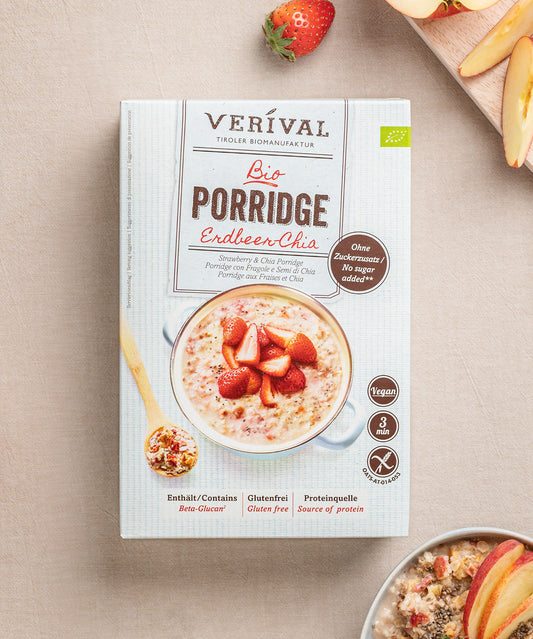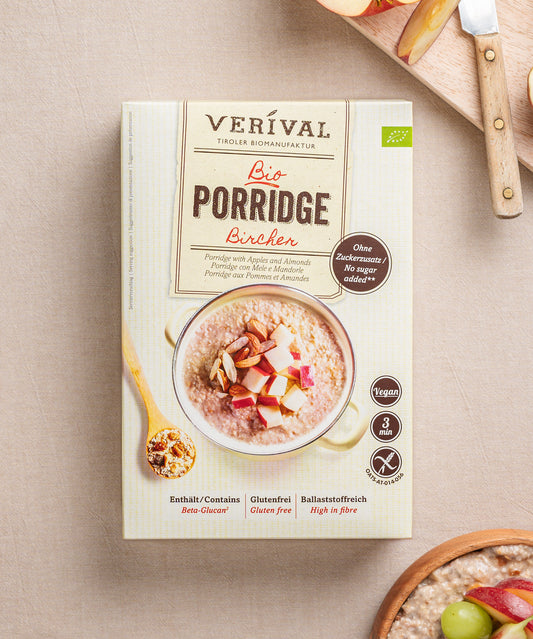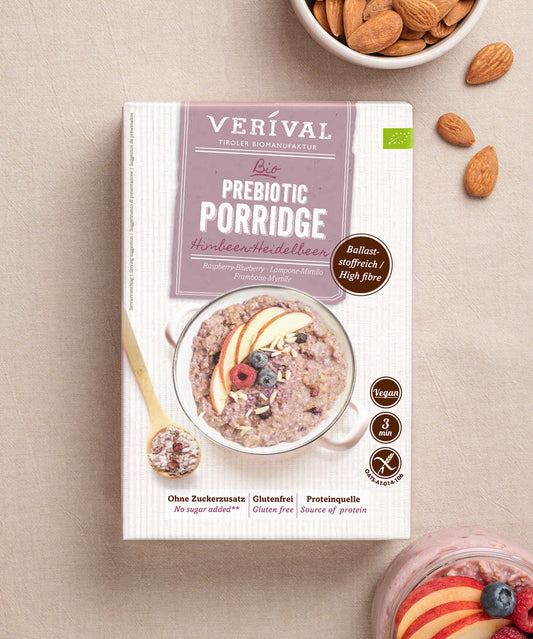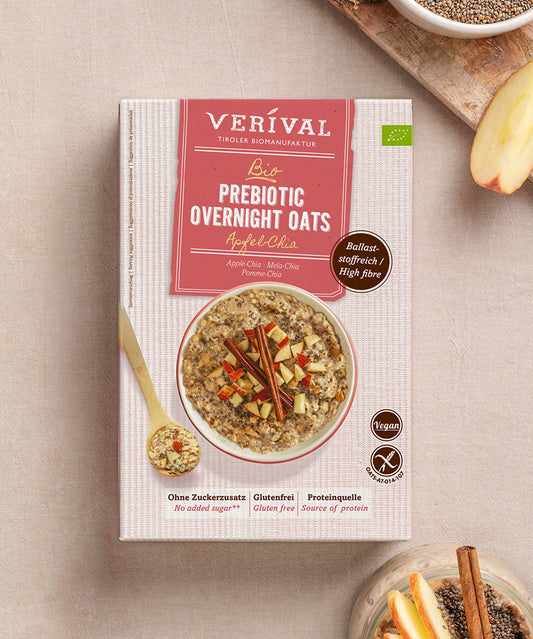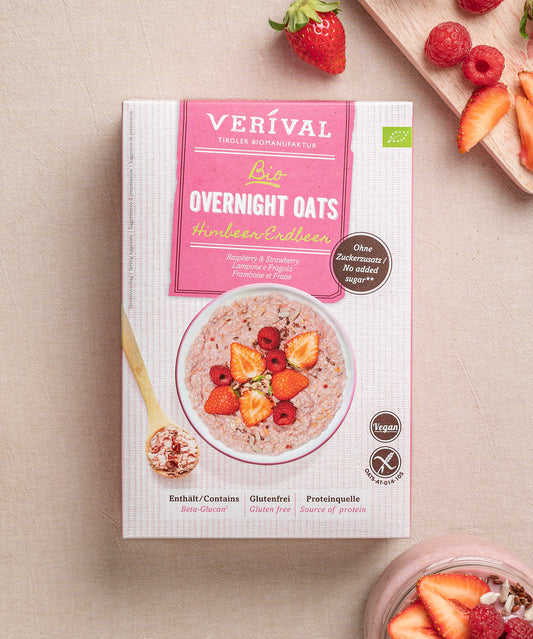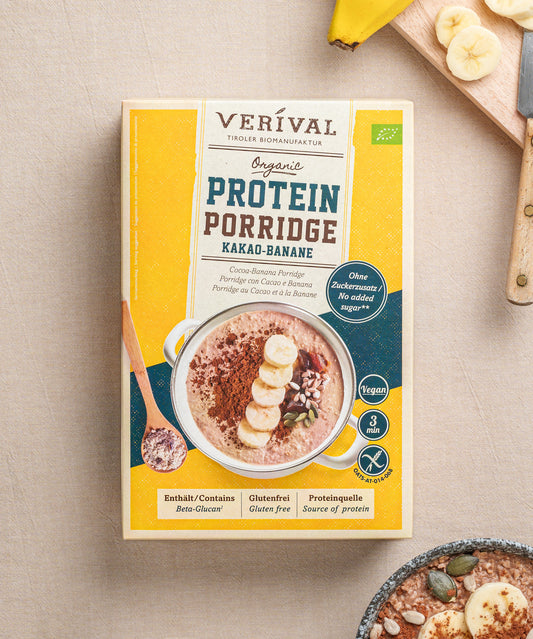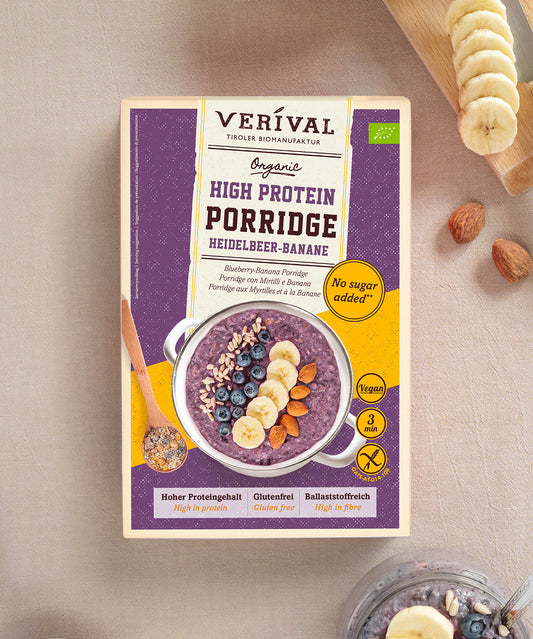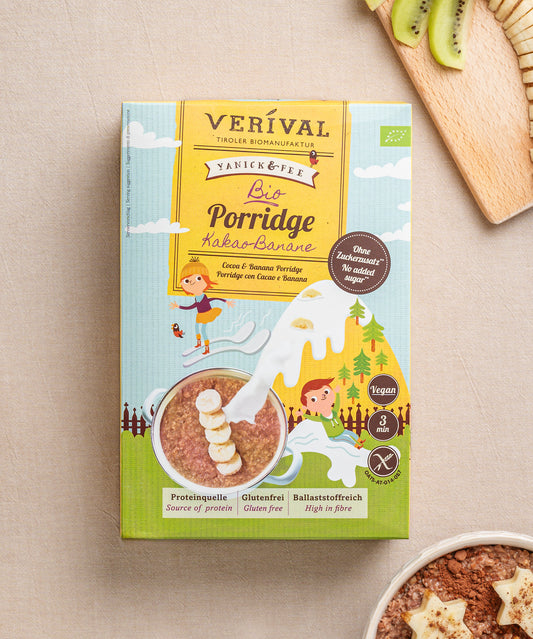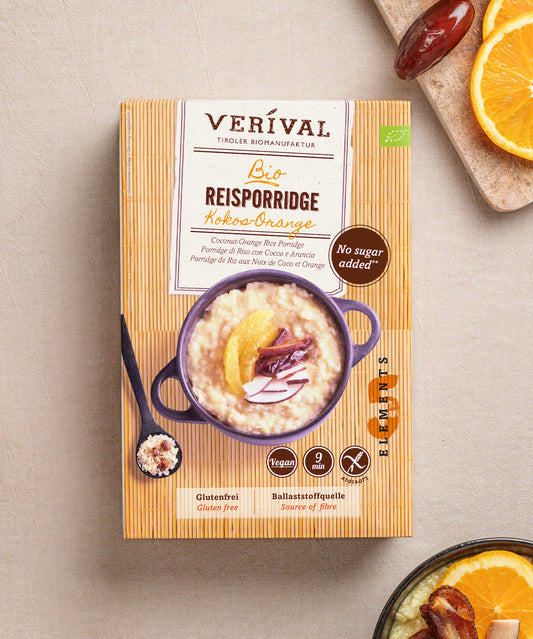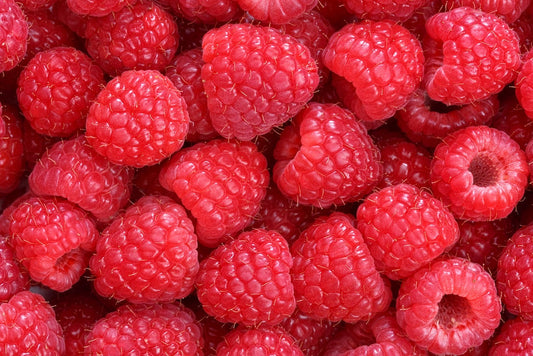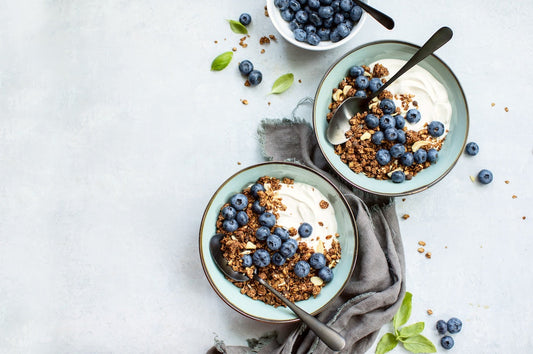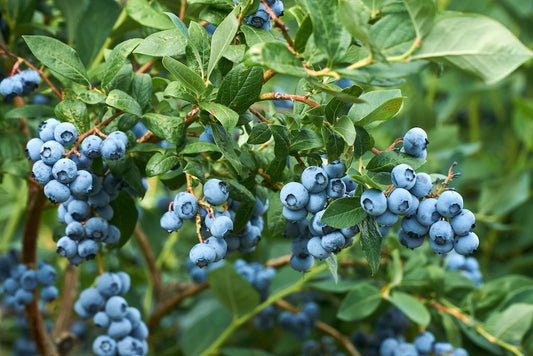Dietary fiber is an important part of a healthy diet that is often neglected. However, it plays a crucial role when it comes to bowel health.
In this article, we take a look at the different types of dietary fiber and their effect on the intestines. You will learn how a high-fiber diet can contribute to better health.
Discover breakfast with fiber!
Introduction to dietary fiber
Dietary fiber is not just a trendy food, but the key to a healthy diet. They are found in plant-based foods and are basically indigestible food components. But even if our body does not digest them, they still have an important function. A diet rich in fiber not only promotes healthy digestion, but also has a variety of health and wellness benefits.
The different types of dietary fiber
There are two types of dietary fiber: soluble and insoluble. Both contribute to healthy bowel function, but they work in different ways.
Soluble dietary fiber
Soluble fiber has the remarkable ability to dissolve in water and form a gel-like consistency. This slows down the food bolus in the digestive tract and improves nutrient absorption. Some of the most well-known soluble fibers are pectin and inulin. Pectins can be found in apples and berries, for example, while inulin is found in foods such as chicory and artichokes. These fibers promote healthy bowel flora, support intestinal wall integrity and can even lower cholesterol levels.
Soluble fibers have the remarkable ability to dissolve in water and form a gel-like consistency. This helps to slow down the food bolus in the digestive tract and optimize nutrient absorption. Some of the most well-known soluble fibers are pectin and inulin. Pectin can be found in apples and berries, for example, while inulin is present in foods such as chicory and artichokes. These fibers promote healthy gut flora, support the absorption of nutrients through the intestinal wall and can even lower cholesterol levels.
Insoluble dietary fiber
As the name suggests, insoluble fiber does not dissolve in water and retains its shape during the digestive process. It is found in foods such as whole grains, nuts, and seeds. This fiber increases stool volume, promotes bowel movement, and prevents constipation. An example of a well-known insoluble fiber is cellulose, which is found in vegetables such as broccoli and leafy greens, among other things.
Why is fiber good for your gut?
Fiber is good for your gut. It provides an optimal environment in which healthy gut bacteria can thrive and a balanced intestinal flora can develop. A healthy intestinal flora, intact intestinal mucosa and adequate intestinal motility are key to your health and well-being.
However, they are not only responsible for smooth digestion and functioning intestinal activity, but also positively influence the absorption of nutrients through the intestinal wall. In addition, they strengthen the immune system.
What is the function of dietary fiber in nutrition?
Dietary fiber contributes to a long-lasting feeling of satiety, which in turn helps to avoid overeating. They also regulate blood sugar levels by slowing down the absorption of sugar. In addition, they bind bile acids and thus transport the cholesterol they contain out of the body.
Since fiber binds water, it also increases the volume of stool, which stimulates intestinal activity and quickly removes unhealthy substances such as toxins from the body.
To benefit from the health advantages of fiber, you need to pay attention to your daily fiber intake. According to the German Nutrition Society, an adult should consume about 30 grams of fiber per day. That's why you should incorporate foods with high fiber content into your diet.
High-fiber foods for a healthy gut
The basis of a high-fiber diet is choosing the right foods. We'll give you insights into the most important sources of fiber.
Legumes and grain products
Pulses such as lentils, beans and peas are among the top foods in terms of fiber content. However, they are not only high in fiber, but also provide other valuable nutrients, such as magnesium, B vitamins, potassium and iron. These little powerhouses are an excellent way to increase your fiber intake.
Another excellent source of fiber is cereal products, especially whole grain products. Whole grain bread, whole grain pasta, oatmeal, oat bran and wheat bran are excellent options for getting the fiber your body needs. They not only promote healthy bowel function, but also provide long-lasting energy and vitality.
Fruits and vegetables
Fruits and vegetables not only add color to your plate, but also a wealth of fiber for your gut. Plums, apricots, Jerusalem artichokes, artichokes, broccoli, and salsify are among the fruits and vegetables with the highest fiber content. They also provide an impressive amount of vitamins, minerals and antioxidants. These nutrients work together to promote your health and general well-being.
Other high-fiber foods
In addition to the classic sources of fiber, you can also increase the fiber content of your diet by adding flaxseed, chia seeds, nuts or quinoa. Seeds and nuts, for example, are a great addition to muesli or porridge. Nuts, in particular, are also a delicious snack for in between meals.
A balanced mix of different high-fiber foods forms the basis for healthy digestion.
High-fiber nutrition and chronic illnesses
Dietary fiber has a significant influence on the prevention and treatment of intestinal illnesses. It lowers the risk of intestinal cancer, promotes digestion and supports intestinal health. It also has positive effects on type 2 diabetes by regulating blood sugar levels.
A high-fiber diet can also reduce the risk of cardiovascular disease by lowering cholesterol levels. Fiber can even alleviate or prevent hemorrhoids by promoting bowel movement.
Recommendations for a high-fiber diet
The German Nutrition Society (DGE) emphasizes the importance of fiber in the diet and recommends that adults consume about 30 grams of fiber daily. Given modern eating habits, this requirement can become a challenge.
By consciously integrating fiber-rich foods into your diet, you can ensure that you meet your daily needs. It's best to start the day with a breakfast that is full of valuable fiber. Foods such as oats, seeds, nuts, fruit and vegetables are suitable for this.
You will find all of these in Verival's breakfast products. Many of the muesli and porridge creations are oat-based and therefore excellent sources of fibre. The prebiotic porridge with raspberries and blueberries contains a particularly high amount of fibre.
CTA: High-fibre breakfast from VERIVAL – try it now!
Summary – Fibre for a healthy gut
Dietary fiber is an essential component of a healthy diet and has a positive effect on the intestinal flora. It can be divided into soluble and insoluble fiber, both of which offer important advantages. They promote healthy intestinal motility, strengthen the intestinal mucosa and lower cholesterol levels.
The German Nutrition Society recommends about 30 grams of fiber daily. Legumes, grain products, fruits, vegetables, flax seeds and chia seeds are excellent sources. Verival breakfast products are a delicious way to meet your fiber needs and promote gut health.
Frequently asked questions
Why is fiber important for gut health?
Fiber plays a central role in gut health for several reasons: it promotes regular intestinal motility and strengthens the intestinal mucosa. It also serves as food for healthy intestinal bacteria and thus contributes to the development of a healthy intestinal flora. Regular bowel movements not only ensure proper digestion, but also have an impact on overall health.
What is the difference between soluble and insoluble fiber?
Soluble fiber dissolves in water and has a gel-like consistency, while insoluble fiber retains its shape during digestion. Soluble fiber slows digestion and increases nutrient absorption. They include pectin and inulin. Insoluble fibers increase the stool volume and promote intestinal motility. One of the best-known insoluble fibers is cellulose. Both types are important for intestinal health.
Which foods are particularly rich in fiber?
The most important foods with a high fiber content are: whole grain products (e.g. whole grain bread or whole grain pasta), oats, legumes (e.g. chickpeas, lentils, peas), vegetables (e.g. artichokes, broccoli, salsify), fruit (e.g. apricots, plums), nuts and seeds. Incorporate these foods into your daily diet, for example with high-fiber muesli or porridge from Verival, to benefit from the health advantages.
How can a high-fiber diet help with chronic diseases?
A high-fiber diet plays an important role in the prevention and treatment of chronic diseases. Fiber aids digestion, lowers blood sugar and cholesterol levels, and reduces the risk of type 2 diabetes, cardiovascular disease, hemorrhoids and colon cancer.
What does the German Nutrition Society recommend in terms of fiber intake?
The German Nutrition Society (DGE) recommends a daily fiber intake of about 30 grams for adults. By consciously incorporating fiber-rich foods into your diet, you can easily implement the DGE guidelines and benefit from the health advantages.
